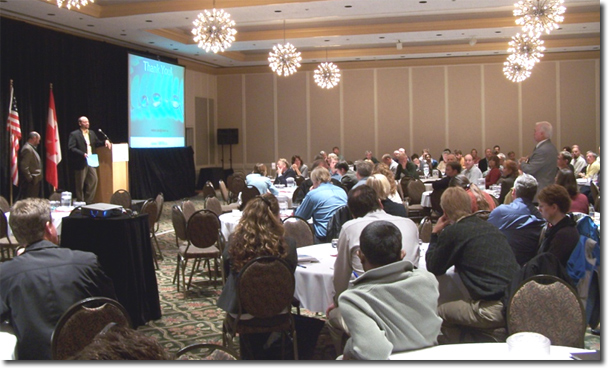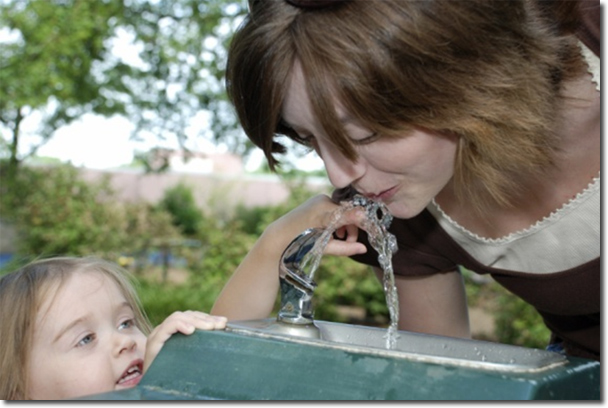As part of their environmental studies program, grade seven students from the Eugene Reimer Middle School in Abbotsford, B.C. recently participated in a Living Water Smart Home Water Assessment competition. Students were asked to write an essay explaining how they, and their families, live water smart. Authors of the ten top entries received a Living Water Smart bottle and their essays are included below for you to read and enjoy. Great work Eugene Reimer Middle School!
If you’d like to do something similar at your school, please send us a message at [email protected].
Water Waste World
by Akash
Eugene Reimer Middle School
Abbotsford, B.C.
How am I water smart? I'm water smart by turning off the tap when I am brushing my teeth. I started that when I was 4, since my dad said, "Don't leave the tap on, it costs money." I said, "OK," then ever since I started to turn off the tap.
The other water smart I do is wash the car every month but never in the winter unless we want a frozen carsicle. We use a bucket with soapy water and a trigger hose, never a hose with just a hose. My other water smart is drycleaning our dishes with a little little water on it. I don't do dishes but if I do I'll use my water smart with the dishes.
I'm also water smart at the bathtub, where I take a shower instead of a bath. Also I learnt about a toilet is: If it is yellow, let it mellow. If it is brown, flush it down. I don't go and waste water, I'm never like that!
Doing water fights are just a water waste world. The last time I did a water fight was when I was 7 and I'm 12 now! One person I know wasted so much water that they had to come to us just to get a drink of water! I was laughing when the tap spurted water and made a flood in their house. And that shows I am water smart.
YOU TOO CAN Save Water
by Jagroop
Eugene Reimer Middle School
Abbotsford, B.C.
I do a lot of things to save water which I will explain to you in this piece.
One way I save water is by turning the tap off while brushing and while applying soap on dishes. This is a big rule for me because I hate wasting perfectly clean water. By wasting water we also waste money. I also tell my family to turn off the tap if they are not using it. Same thing when we apply soap on dishes. I am trying my best to get used to these habits.
Second way I save a ton of water and a ton is by installing the water saver toilet, and a low flow shower head. We have also noticed we have been saving some money. The brand new water saver toilet flushes 6 litres per flush while the ordinary toilet's average 13 litres per flush. The shower head is also a big water saver. It has three switches: one is for a quick shower, the second is for washing your hair, and last but not least the third switch is for a relaxing shower. All of these switches conserve water. These two necessities are fantastic water savers. I bet everyone will have these necessities by 2012.
Now I will tell you how I save water outside. I conserve water outside by washing my cars on grass and we have a drainage system. When I wash my car on the grass all the dripping water drips onto the grass. That way we don't have to waste our water. You're probably thinking that all the toxins from the car washing soap slither to the grass, but you're wrong. I only use a limited amount of soap when we wash the cars.
The drainage system is excellent too. This year we renovated our yard and we opened up our drainage system so water can go through to the river. We clean our gutters every November so that the water that goes into the drain can be clean. I am pretty sure that 40-50% of the city has a drainage system. Hopefully everyone will, so we can SAVE WATER.
So that is how I save water. Water is really important in this world so everybody should save water! If I can do it you can do it too!
How I am Water Smart is…
by Selina
Eugene Reimer Middle School
Abbotsford, B.C.
How I am water smart is when I wash the dishes I usually take two pans and fill them up with water. I have one pan to wash and the other to rinse.
When we wash our car we use the nozzle on the hose that when you turn it the water will stop or go; and sometimes when we have to we use a bucket with soapy water and a sponge. When we dump it we usually dump it far away from any drains, grates and all of those that lead to lakes, oceans, seas or ponds.
When I wash my hands or brush my teeth I turn off the tap in between, so I don't waste the water.
For a while my mom and dad put a milk jug in our toilet tank so it will only use some water but then they took it out because it did something that made our toilet not work as well.
On our shower head there is a spin dial on it; some are not used as much but the others get used more to save water.
When I was 9 I painted fish next to drains to tell people that these drains lead to places where fish are.
And because of all these reasons, that is how I am water smart.
How are You Water Smart?
by Arashdeep
Eugene Reimer Middle School
Abbotsford, B.C.
It depends on how you define water smart. No human really uses resources as sparingly as we should but some are better than others. I don’t try to use less resources, we just use what we need for showers, dishes and other stuff. I know I should try to use less but I just don't. But since we have a small family we use very little water.
We do not use more water than we need, well not more than modern day life requires (which is still quite a lot). We take short showers but our shower releases a lot of water. Our family uses the toilet a lot and I'm sorry to say our toilet is not very water efficient. We don't have a dishwasher and we wash all our dishes by hand and I believe that saves water, but if we had one we would use it instead.
Any item that would make our lives easier my family will use. It may not be the best thing to do in these times but it is what most families do. Inventors are releasing new inventions everyday and most are not energy or water efficient, but some inventors are trying to make the things we do more water efficient. It may not be much but it seems to me this is the only way us humans will improve our efficiency.
Some families are trying to increase their efficiency and I'm proud that some families care enough to try and hope that others will follow in their footsteps. But this is easier said than done and humans are very stubborn once they start using something; is very hard for them to change. We humans have the ability to convince ourselves that whatever we do is right, but it's not. Messing up is what makes people human, but fixing your errors is what makes you great.
THINK Smart
by Karan
Eugene Reimer Middle School
Abbotsford, B.C.
Many people in the world are not water smart, but I am. What is water smart? Water smart is when you use less water. If you take only 5 minutes in the shower then you are water smart.
For example, you should go to the car wash because at the car wash they reuse water every time. If you are using the hose then you waste lots of water.
Second example is you should take less time in the shower because the more time you are in the shower, all the water is not getting reused, it's going into the sea. Just imagine, if you took a half hour shower you just wasted more than 11 two litre bottles.
Last but not least, you should install underground sprinklers. You set the sprinklers on a certain time and they turn off at the time you put it on. If you're using the normal sprinklers then you just turn them on and they keep going until you turn them off.
All I need to say is please be water smart. If you are water smart then you are thinking smart. If you think smart then you are helping our environment.
EVERY DROP COUNTS
by Shanelle
Eugene Reimer Middle School
Abbotsford, B.C.
To conserve water requires that we have the will and the way! My family understands the necessity of being water smart. For too long we have taken our clean water supply for granted. Areas where personally I can contribute to water conservation are Outside use, Bathroom use and while Cleaning.
Gardening and washing vehicles can be done with a limited amount of water. First of all we use an automatic shut off attached to the hose to fill watering cans for watering plants. Also we use a bucket of water with environmental friendly cleaner for washing our vehicles.
We remind each other every day to be aware of our water use in the bathroom. To preserve our water supply we do our best to keep showers short and turn off the water while brushing our teeth. When a leaky faucet is noticed it is soon repaired. Recently our toilet had a leak we didn't know about. My dad replaced it with a properly working, low flow toilet.
The last area where we can save water is while cleaning. One way my family practices this is by instead of using harsh chemicals that go into the drainage system we use vinegar and water to clean different surfaces. Dishes and laundry need to get washed but we wait until we have a full load. This cuts down on the waste of our precious water.
Because our water is such a precious gift that all humans need to continue living it is very important to preserve it. Conserving water is not only good for our ecosystem, it will also help us to save on the water bill. Our goal as a family is to remember that when it comes to water every drop counts!
A Gift of Water
by Bain
Eugene Reimer Middle School
Abbotsford, B.C.
When you look at water, what do you see? You might see it as a wonderful gift or a thing you don't care about. If you look at water like a gift then you use it like it's your last bit of food. But if you look at water like it's nothing than you probably waste it for no reason. When using water you must treasure it like your child. If you keep using water all the time water won't exist anymore ... We won't exist anymore.
The things I do to be water smart is I have short showers. I only fill up the bath halfway because if you fill your bath almost full you waste a lot of water! One more thing I do is I don't water the grass all the time, which is a big waste, as much as 1000 litres of water a day. That is a lot of fresh water which could be drunk by all of Africa.
Try and use as less water as possible; just remember water is a gift.
WE ARE THE KEY
by Manreet
Eugene Reimer Middle School
Abbotsford, B.C.
The ocean is home to millions of animals. Water is not only important to animals in the ocean, but also to humans, animals, and plants on land.
Water is a key to life, so why not try to conserve it by turning the water off when brushing your teeth, or loading the dishwasher instead of washing the dishes separately in the sink, and by turning the hose off when washing your car. A long warm shower may be soothing and relaxing but to the environment it’s just another step towards global warming and water shortages.
Also always keep an eye out for any leaks in taps and pipes in your house. After you are done taking a soothing bath you can use the same water to water the garden. We can reuse gray water.
Water is not only used for taking baths or brushing your teeth it is also used for energy like lights. Without water we would be surrounded by darkness. Humans would have to depend on sunlight and fire for light. We humans take more than we give.
In conclusion humans are the key to wasting water, but they also can be the key to conserving water. Humans should take a step toward saving water.
The Deal with Water Smarts
by Dylan
Eugene Reimer Middle School
Abbotsford, B.C.
Drip, drip, drip goes the tap that you forgot to turn all the way off after you were finished brushing your teeth. Is this what you call water smart?
North America has the most fresh water than any other place on earth. Of course we take this for granted and without thinking just waste water nonstop. I'm going to tell you some ways that me and my family are being water smart. One way we are keeping water smart is that we have installed low flow taps into all of our sinks. Low flow taps have a mesh of wire covering the tap opening to prevent all the water from just gushing down the drain.
Another way we are being water smart is that we have put bricks in our toilet tanks. When you put a brick in toilet tank, the brick displaces some of the water in the tank. This prevents the tank from filling up all the way. So when you flush the toilet, less water is lost to the sewers which just pump it into the ocean.
One of the most important ways that we stay water smart is that we don't water our lawn in the heat of summer. When people do water their lawns in the summer, most of the water just evaporates into the air. We let the grass wither in the summer and watch it grow back in the fall and spring.
In conclusion, being water smart has worked out fine with my family and it will also work out with everyone. All we need to do is make a goal about it and stick to it. But most importantly we need to ask ourselves, are we water smart?
do your bit
by Meenu
Eugene Reimer Middle School
Abbotsford, B.C.
We only have 3% of pure water in our world, 2% in glaciers and ice and 1% in precipitation. We should start saving water because in the year of 2025 2/3 of the world would be water poor. Everybody can save water in their own way. I save water in my home in many different ways but there are 3 ways that are the most important to me. Number 1: take short showers, 2: while brushing your teeth turn the water off when not in use, and 3: take your car to the carwash for a clean.
Water is a source that keeps almost every living thing alive. It keeps us alive. We use water to clean ourselves. We can save water by taking short showers instead of a bath. A bath takes up more water than a shower. If you take a long shower it is just like taking a bath but if you take a short shower you are using up less water. In 20 minues you can fill up a whole bathtub, which is about 140 litres. In that same time you cannot fill up a whole bathtub using a shower head and in that would be about 20-60 litres of water. So 20 minutes of a bath takes up 140 litres and 20 minutes of a shower only takes up 20-60 litres. The best for us and our world would be to take a short shower.
Brushing your teeth is another way of wasting water but we can be water smart about that too. Turn the water off when not in use. Brush your teeth with the water off and when you need the water make sure it is cold water. Use a mug to rinse out your mouth. Don't rinse your mouth by cupping water in your hands or drinking from the faucet. This wastes just about as much water while you brush. If you have to rinse out your mouth repeatedly, choose a more environmentally friendly toothpaste. These types of pastes use less strong chemicals. Don't use bottled water to brush your teeth, this just wastes natural resources. Rinse out your toothbrush in the remaining water in your mug and remember not under your faucet.
Everybody wants their cars to shine so we give them a great wash. Washing your car from a hose or a bucket uses up more water than a car wash. A car wash uses the same water over and over again. They recycle and reuse water. Many people know about this but still choose to ignore it because it costs money and they also think, "What is better than giving our car a clean without giving money?" People that only think about the loss of their money rarely think about the loss of water we will be having soon. Going to a car wash is the number one thing to do because they reduce, reuse, and recycle.
We all can do a bit for our world and when we combine all these little bits we could prevent water loss in 2025. Taking showers, turning the water off while brushing and taking your car to a car wash are small things we could be doing every day. I am so used to this procedure that I don't realize I am being water smart. Everybody should have a part in this because we don't want to hear 3% of pure water left, we want to hear 100% pure water. But we can't make this happen because we were careless before, so start caring and become water smart.

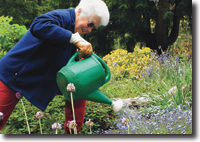
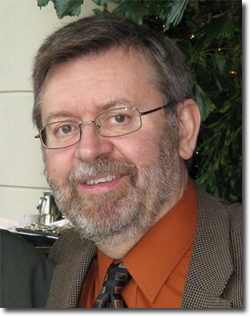 Kim Stephens
Kim Stephens  Cowichan Valley Learning Lunch Series, 2008
Cowichan Valley Learning Lunch Series, 2008 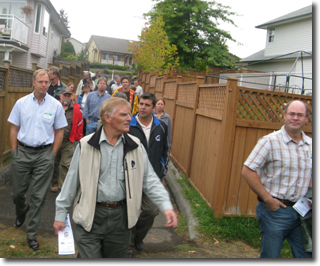 Kevin Lagan from the City of Courtenay with participants of the 2008 Learning Lunch Series
Kevin Lagan from the City of Courtenay with participants of the 2008 Learning Lunch Series  Participants at the 2009 Comox Valley Learning Lunch Series
Participants at the 2009 Comox Valley Learning Lunch Series 